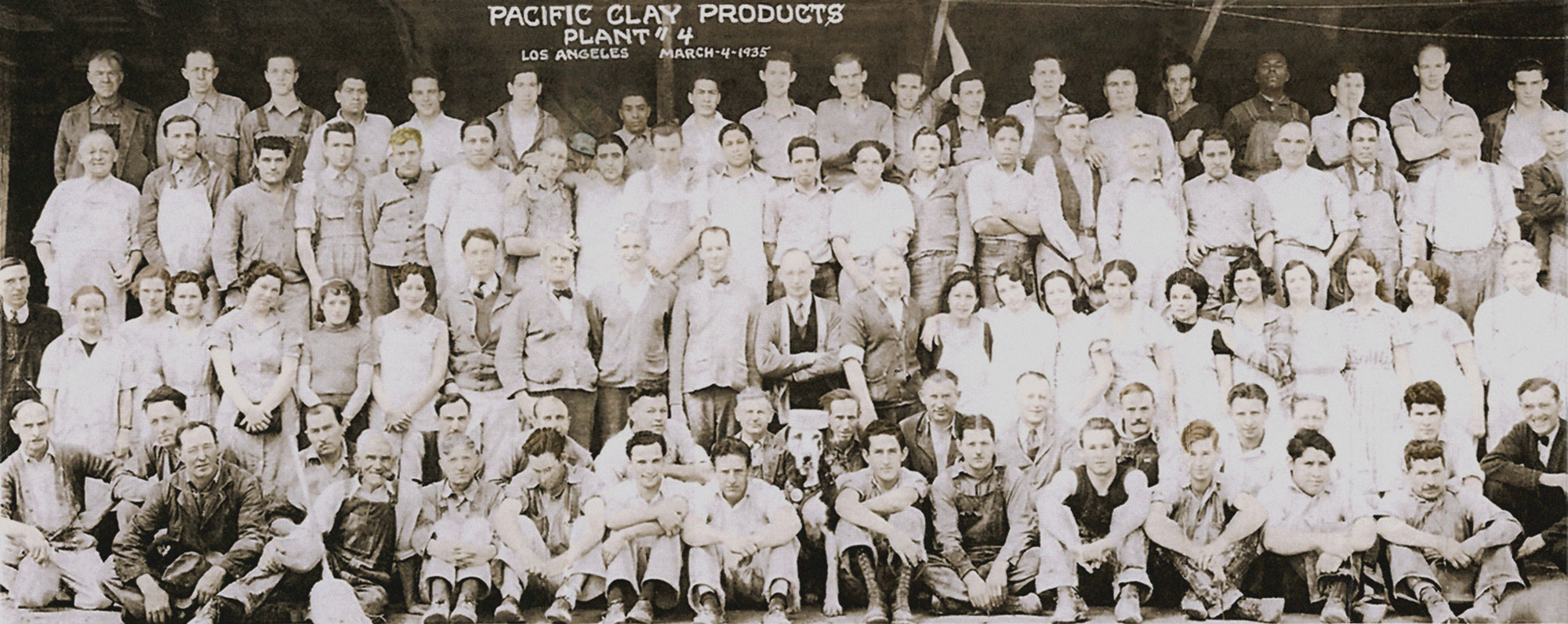Pacific Clay Products formed as the result of a series of mergers of several Southern California commercial pipe and tile companies in the late 1800s, the earliest founded in 1886. By 1910 additional merger activity resulted in an entity called Pacific Sewer Pipe Company. The company changed their name to Pacific Clay Products Company in 1921. In 1923, a new holding company, The Pacific Clay Products, Inc., led by Los Angeles industrialist William Lacy, was formed, and in 1926 the company went public.
At the time of the stock offering, Pacific’s product lineup consisted of vitrified sewer pipe, electric conduit tile, water pipe, face enamel brick, firebrick, terra cotta, flue lining, stoneware, and drain tile to support the Southern California building boom of the 1920s. When the housing market collapsed in the late 1920s, Pacific reported a considerable slowdown in industrial production. Looking to diversify, they began producing stoneware specialty ware to supplement their architectural business. Early offerings included an assortment of kitchen and servingware in addition to some gardenware pieces. Servingware lines included an assortment of bowls, pitchers, mugs, and other household items.








